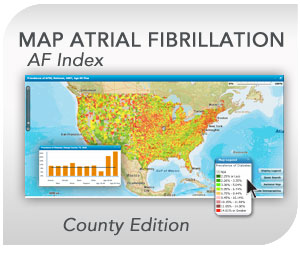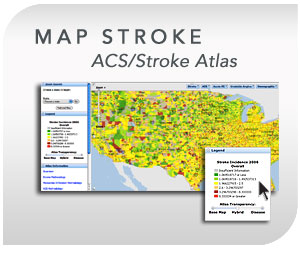Stroke Reports
Tuesday, June 18th, 2013

Annals of Neurology: June 17, 2013 Objective Long-term data on recurrent vascular events after young stroke are limited. Our objective was to examine the long-term risk of recurrent vascular events after young stroke. Methods We prospectively included 724 consecutive patients with a first-ever transient ischemic attack (TIA), ischemic stroke, or intracerebral hemorrhage (ICH), aged 18 […]
Stroke Reports
Tuesday, June 18th, 2013

J NeuroIntervent Surgery: June 15, 2013 Background and purpose The optimal management of stroke patients who fail treatment with intravenous recombinant tissue plasminogen activator (rt-PA) remains unknown. A study was undertaken to establish whether treatment with a standard intravenous t-PA dose (0.9 mg/kg) followed by multimodal endovascular therapy would have a similar safety profile to reduced dose […]
Stroke Reports
Tuesday, June 18th, 2013

Nature: June 12, 2013 Cerebral stroke continues to be a major cause of death and the leading cause of long-term disability in developed countries. Evidence reviewed here suggests that gender influences various aspects of the clinical spectrum of ischemic stroke, in terms of influencing how a patients present with ischemic stroke through to how they […]
Stroke Reports
Tuesday, June 18th, 2013

Nature: June 12, 2013 Treatment efficacy for ischemic stroke represents a major challenge. Despite fundamental advances in the understanding of stroke etiology, therapeutic options to improve functional recovery remain limited. However, growing knowledge in the field of epigenetics has dramatically changed our understanding of gene regulation in the last few decades. According to the knowledge […]
Stroke Reports
Tuesday, June 18th, 2013

J NeuroIntervent Surgery: May 13, 2013 Background and purpose Technological advances have helped to improve the efficiency of treating patients with large vessel occlusion in acute ischemic stroke. Unfortunately, the sequence of events prior to reperfusion may lead to significant treatment delays. This study sought to determine if high-volume (HV) centers were efficient at delivery of […]
Stroke Reports
Sunday, June 16th, 2013

Background: Controversy surrounds the safety of intravenous (IV) tissue plasminogen activator (tPA) in ischemic stroke patients treated with warfarin. The European tPA license precludes its use in anticoagulated patients altogether. American guidelines accept IV tPA use with an international normalized ratio (INR) ≤1.7. The influence of warfarin on symptomatic intracerebral hemorrhage (SICH), arterial recanalization and […]
Stroke Reports
Sunday, June 16th, 2013

The Lancet Neurology: May 31, 2013. Systemic thrombolysis with alteplase is the only approved medical treatment for patients with acute ischaemic stroke. Thrombectomy is also increasingly used to treat proximal occlusions of the cerebral arteries, but has not shown superiority over systemic thrombolysis with alteplase. Many patients with acute ischaemic stroke are pretreated with antiplatelet or […]
Stroke Reports
Sunday, June 16th, 2013

The Lancet Neurology, May 31, 2013. Haemorrhagic transformation (HT) of ischaemic infarction occurs when an area of brain infarction is stained with blood products, mainly red blood cells. An abnormally permeable blood—brain barrier resulting from ischaemia of the capillary endothelium allows this extravasation of blood products. HT is part of the natural history of some forms […]
Stroke Reports
Sunday, June 16th, 2013

AHA – May 30, 2013 Background and Purpose—Parenchymal hematoma (PH) may worsen the outcome of patients with stroke. The aim of our study was to confirm the relationship between the volume of very low cerebral blood volume (CBV) and PH using a European multicenter database (I-KNOW). A secondary objective was to explore the impact of […]
Stroke Reports
Sunday, June 16th, 2013

AHA – May 23, 2013 Background and Purpose—The study aimed to assess whether onset headache is an ominous sign in patients with first-ever ischemic stroke. Methods—A large population of ischemic stroke patients was obtained from the Taiwan Stroke Registry. Stroke subtypes were classified by the Trial of ORG 10172 in Acute Stroke Treatment (TOAST) criteria. […]


































